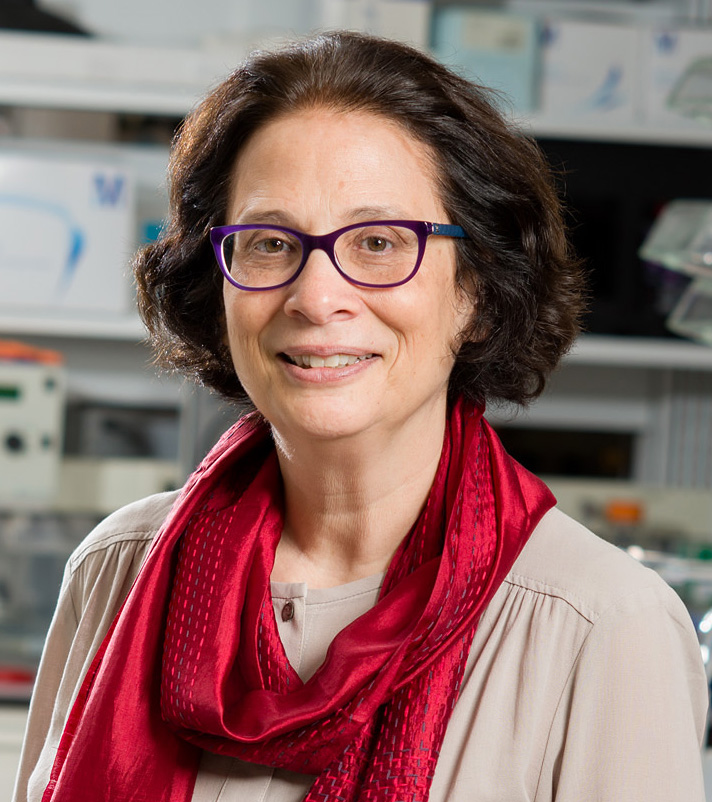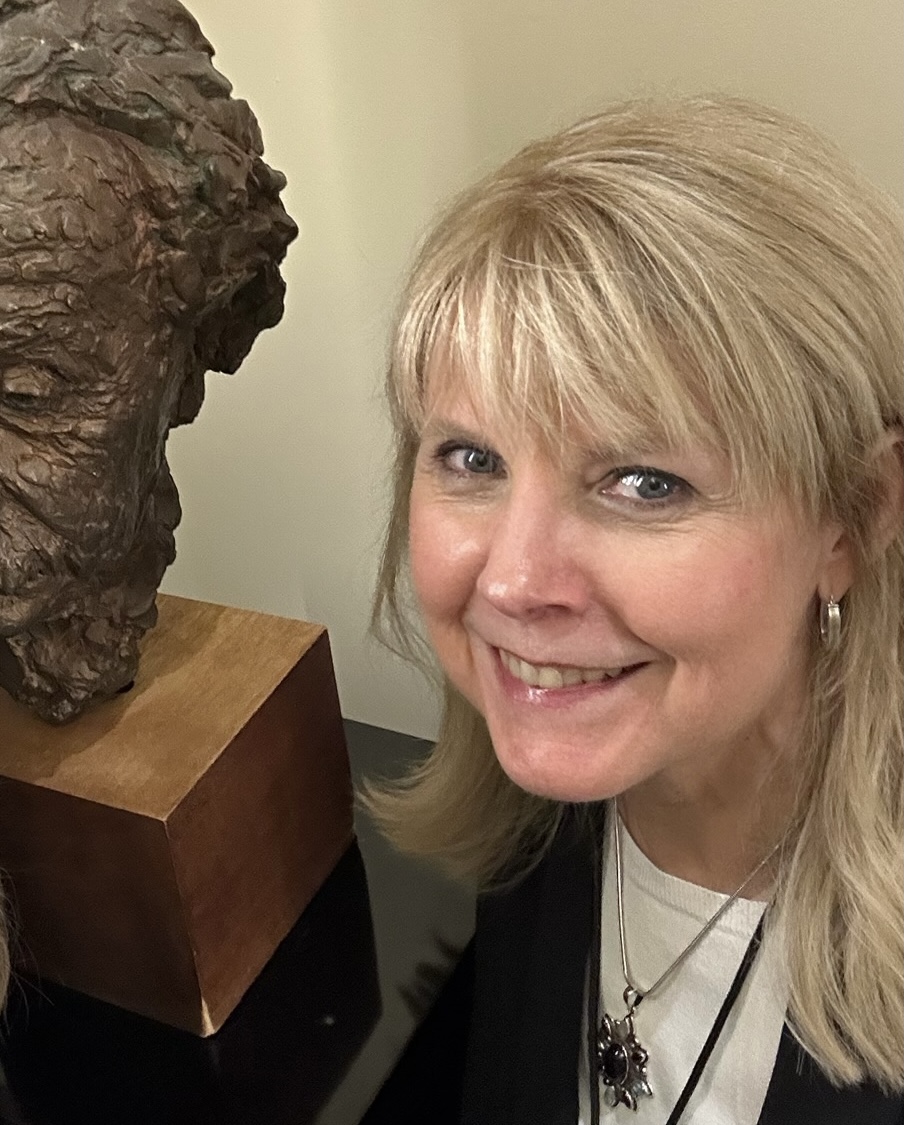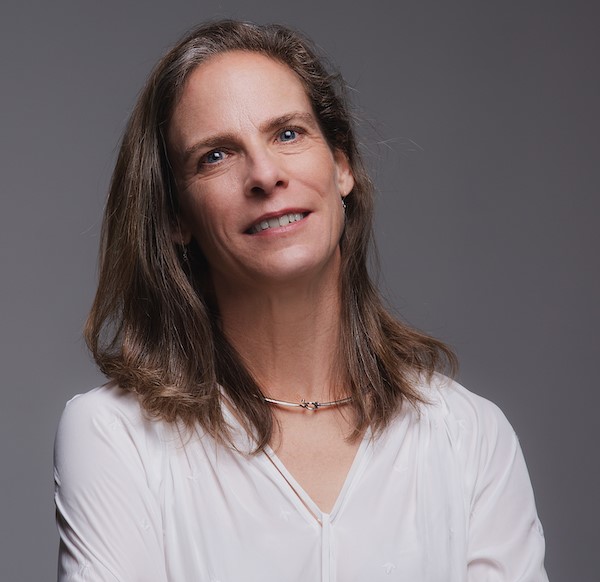Three NCI Frederick branch chiefs have joined the ranks of three esteemed societies within the last year.
While they’re grateful for the honor, they’re trying to share the limelight. The three say the elections serve to applaud their teams’ contributions, acknowledge the importance of investing in other scientists, and underscore that good science happens when many minds come together.
Read on to meet the recipients.
 Sandra Wolin: Academy and Association Fellow
Sandra Wolin: Academy and Association Fellow
“I consider it a great privilege to have a career as a scientist.”
Sandra Wolin, M.D., Ph.D., chief of the RNA Biology Laboratory, was elected to the American Academy of Arts and Sciences (AAA&S) this year as a member of its Section of Biochemistry, Biophysics, and Molecular Biology.
“I am very honored to have been elected. It is a particularly special honor to have been elected by my fellow scientists,” she said in an email. She is grateful to the many members of her laboratory group, as it’s their hard work and efforts that are being recognized, she said.
AAA&S is one of the oldest learned societies in the U.S. and unites leaders across academic and professional disciplines “to address significant challenges” and advance the public good, according to the academy’s website. Among its recent work is an initiative on climate change and a project that studies better methods of communication between the scientific community and the public.
With the honor, Wolin has become one of a small number of scientists who belong to AAA&S and the American Association for the Advancement of Science, to which she was elected in 2013. She was also recognized with the Sandra K. Masur Senior Leadership Award from the American Society for Cell Biology in 2021. These are major achievements.
Getting there was also a major journey. Wolin’s scientific career began as a freshman in college, where she maintained fruit fly stocks for the biology department. Over time, the professors she worked with began giving her small experiments to run. She was enthralled by the science, and she still is.
“There are so many scientific questions that I still want to answer!” she said in an email.
While she no longer performs experiments herself, she’s still committed to making a difference, mentoring new generations of scientists and building a robust RNA biology group in Frederick. She looks to foster their potential, not unlike how others have done for her throughout her career.
 Deborah Morrison: ‘A Day I’ll Never Forget’
Deborah Morrison: ‘A Day I’ll Never Forget’
“This, in some ways, is a nice recognition that you can make a difference.”
Deborah Morrison, Ph.D., chief of the Laboratory of Cell and Developmental Signaling, was elected to the National Academy of Sciences (NAS) in 2022 and attended the induction ceremony this year.
She learned of her election during a period of illness, only discovering the news when she opted to check her email before laying down to rest. She was taken aback to discover several messages from her colleagues about an honor for which she didn’t know she’d been nominated.
“All of a sudden, I started getting these emails congratulating me for my election to the National Academy. I was stunned,” she said, calling it “a very big high at a very difficult time” and “a day I’ll never forget.”
NAS is a private scholarly society tasked with impartially advising U.S. entities on “matters of science and technology,” according to the organization’s website. Membership is by nomination and election only. By NAS’ own estimation, approximately 500 Nobel Prize recipients have been members during the academy’s 160-year history.
For Morrison, who came from a background in which women weren’t expected to be interested in science, the honor is a reminder of the importance of passion and tenacity. It’s also proof that “you can do things outside of the box that you grew up in,” she said.
Morrison describes a career in science as a mixture of that passion with the courage to try new, challenging things and the discretion to know when to step away from problems that can’t yet be answered.
She firmly believes that research isn’t something one does alone, either. Calling her lab staff “extended family,” she said science also has a feeling of “working together for the greater good”—and of sharing the rewards of success, including her election to NAS.
“It’s a team effort of all the people who have worked with you,” she said.
 Susan Lea: ‘No Science Without the Group’
Susan Lea: ‘No Science Without the Group’
“We’re all passionate about what we’re doing. That’s what makes it fun.”
Susan Lea, D.Phil., chief of the Center for Structural Biology, was elected a fellow of the Royal Society in 2022. She is one of just a handful of National Institutes of Health employees to hold the distinction.
“It was very exciting,” she said. “They’re individual prizes, but of course, they’re really given for the work done by all the people in the group over the years. So it’s a recognition of everybody’s work.”
Founded in London in 1660, the Royal Society is the oldest continuously existing scientific academy in the world. Its mission is to “recognize, promote and support excellence in science and to encourage the development and use of science for the benefit of humanity,” according to the society’s website. Fellows also advise the United Kingdom’s government on science policy. At the time of this writing, election is limited to just 73 fellows and 24 foreign members annually.
Lea joined NCI Frederick in 2020 as the Center for Structural Biology’s first chief, coming from the University of Oxford. The center integrated many of NCI’s structural biology programs, creating a high-capacity, high-talent group. For Lea, it’s the latest chapter in an exciting career.
“I love the science and I’m fascinated by the particular problems, but I think quite a lot of bright people could become fascinated by an awful lot of things,” she said. “But I think the nature of experimental science is that it tends to be something that you do with others, and that’s a really exciting thing to have a sort of common mission and common goals.”
These collegial interactions were among the things that attracted Lea to science in the first place. She sees the field as a place to unify different perspectives to address new questions and shifting challenges for the good of others.
“That’s the great thing about science,” she said. “It’s the ultimate career. Every year is something new and something different.”
It’s a space for researchers at all stages of their careers to grow and make their own meaningful contributions—ones that add up and, on the best days, get recognized.
“Every student who's passed through the group, every postdoc who's passed through the group, this [award] is very much their award because I have no science without the group,” Lea said.
Top image: Sandra Wolin, M.D., Ph.D. Middle image: Deborah Morrison, Ph.D., with a bust of Albert Einstein during the induction festivities for the National Academy of Science. Bottom image: Susan Lea, D.Phil.
Samuel Lopez leads the editorial team in Scientific Publications, Graphics & Media (SPGM). He writes for newsletters; informally serves as an institutional historian; and edits scientific manuscripts, corporate documents, and sundry other written media. SPGM is the creative services department and hub for editing, illustration, graphic design, formatting, multimedia, and training in these areas.


